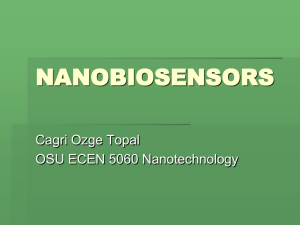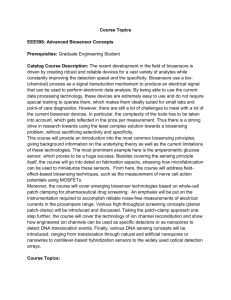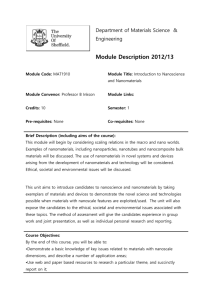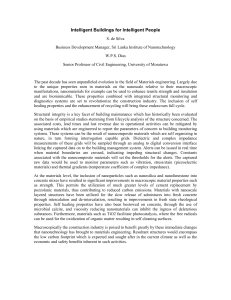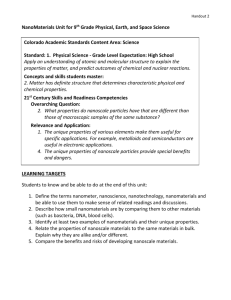368-1436-1-PB
advertisement
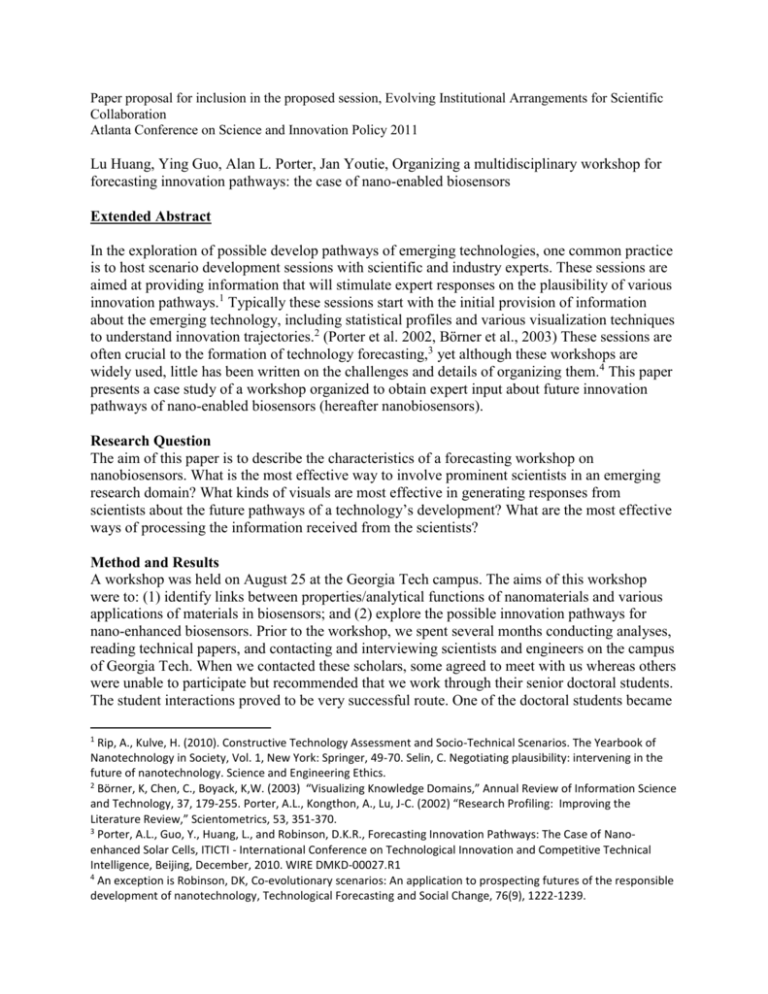
Paper proposal for inclusion in the proposed session, Evolving Institutional Arrangements for Scientific Collaboration Atlanta Conference on Science and Innovation Policy 2011 Lu Huang, Ying Guo, Alan L. Porter, Jan Youtie, Organizing a multidisciplinary workshop for forecasting innovation pathways: the case of nano-enabled biosensors Extended Abstract In the exploration of possible develop pathways of emerging technologies, one common practice is to host scenario development sessions with scientific and industry experts. These sessions are aimed at providing information that will stimulate expert responses on the plausibility of various innovation pathways.1 Typically these sessions start with the initial provision of information about the emerging technology, including statistical profiles and various visualization techniques to understand innovation trajectories.2 (Porter et al. 2002, Börner et al., 2003) These sessions are often crucial to the formation of technology forecasting,3 yet although these workshops are widely used, little has been written on the challenges and details of organizing them.4 This paper presents a case study of a workshop organized to obtain expert input about future innovation pathways of nano-enabled biosensors (hereafter nanobiosensors). Research Question The aim of this paper is to describe the characteristics of a forecasting workshop on nanobiosensors. What is the most effective way to involve prominent scientists in an emerging research domain? What kinds of visuals are most effective in generating responses from scientists about the future pathways of a technology’s development? What are the most effective ways of processing the information received from the scientists? Method and Results A workshop was held on August 25 at the Georgia Tech campus. The aims of this workshop were to: (1) identify links between properties/analytical functions of nanomaterials and various applications of materials in biosensors; and (2) explore the possible innovation pathways for nano-enhanced biosensors. Prior to the workshop, we spent several months conducting analyses, reading technical papers, and contacting and interviewing scientists and engineers on the campus of Georgia Tech. When we contacted these scholars, some agreed to meet with us whereas others were unable to participate but recommended that we work through their senior doctoral students. The student interactions proved to be very successful route. One of the doctoral students became 1 Rip, A., Kulve, H. (2010). Constructive Technology Assessment and Socio-Technical Scenarios. The Yearbook of Nanotechnology in Society, Vol. 1, New York: Springer, 49-70. Selin, C. Negotiating plausibility: intervening in the future of nanotechnology. Science and Engineering Ethics. 2 Börner, K, Chen, C., Boyack, K,W. (2003) “Visualizing Knowledge Domains,” Annual Review of Information Science and Technology, 37, 179-255. Porter, A.L., Kongthon, A., Lu, J-C. (2002) “Research Profiling: Improving the Literature Review,” Scientometrics, 53, 351-370. 3 Porter, A.L., Guo, Y., Huang, L., and Robinson, D.K.R., Forecasting Innovation Pathways: The Case of Nanoenhanced Solar Cells, ITICTI - International Conference on Technological Innovation and Competitive Technical Intelligence, Beijing, December, 2010. WIRE DMKD-00027.R1 4 An exception is Robinson, DK, Co-evolutionary scenarios: An application to prospecting futures of the responsible development of nanotechnology, Technological Forecasting and Social Change, 76(9), 1222-1239. a close advisor to the workshop organizers (who were mostly social scientists) and ultimately a co-author on publications. These contacts led to participation by three professors and four doctoral students with expertise in nanomaterials, biomolecular engineering, and biosensing. The workshop opened with a presentation of 22 slides. Most of the slides were rich in content. Early slides presented the analytic model used by the team and characteristics of new and emerging science and technologies or NESTs. A series of profiles and visual results of publications about nanobiosensors were produced, including a map of the disciplines involved in the domain, a network map of collaborations between companies and researchers working on nanobiosensors, and a list of top companies issuing product releases (as evidenced in Factiva). The slides also included several diagrams depicting how technologies move from research to commercialization, including a technology delivery system flow chart, a diagram showing how workshops lead to scenario exploration, and Robinson and Propp’s Multipath Mapping for “lab on a chip.”5 There were several cross-charts, including one showing horizontal links across nanostructures-analytical functions-biosensors-nanobiosensors; and another showing links between nanoparticles/wires/thin film/nanotube stacks and analytical functions and applications. An application map showing alternative applications over time was also presented. The workshop participants were especially drawn to two of the visuals. They were interested in the Factiva information and understanding what companies were announcing as upcoming product releases. But what particularly resonated with the participants was the lab-ona-chip example. The participants took great care to understand how this map could be applied to nanobiosensors. Participants moved their seats to be in closer proximity to converse with one another about how to apply the lab-on-a-chip example to nanobiosensors. The discussion revealed that some parts of the paths involve innovation in nanotechnology materials, some parts involve connecting into and integrating with the macro world, and yet others represent "business as usual." In contrast, more complex visuals, such as the cross-charts, received less attention. The attendees of the workshop suggested to analyze the characteristics and challenges of biosensors currently used in different industries and then make connections to desirable properties/analytical functions of nanomaterials that may address limitation facing current biosensors. As a result of discussion, we identified the following basic characteristics of, or requirements for, functional biosensors: selectivity, sensitivity, dynamic range, analysis time, ruggedness, and portability. The attendees of the workshop also suggested that different industries have different challenges in current biosensor technology. For example, the dominant challenge for environmental monitoring applications and for the food industry is the sampling issue, i.e., the sample taken for analysis is limited to an extremely low percentage.The basic challenge for disease detection applications and in drug discovery is the identification of biomarkers and their specific roles. The fundamental challenge for biodefense is the inability to detect low concentrations of toxins and the identification of the viability of microorganisms. Motivated by these challenges and input received at the workshop, we propose two innovation approaches. The first involves enhancing biorecognition/bioconjugation using nanomaterials in biosensors (using nanomaterials more passively). The second involves signal transduction or creating new transduction mechanisms using nanomaterials (more actively) in biosensors through three pathways: (1) whole cell sensing behavior, (2) biomolecular interactions on cell membranes or inside cells, and (3) concentration levels of biologically relevant chemical substances. 5 Robinson, DKR, Propp, T (2008). Multi-path mapping for alignment strategies in emerging science and technologies. Technology Forecasting and Social Change 75(4), 517-538.

